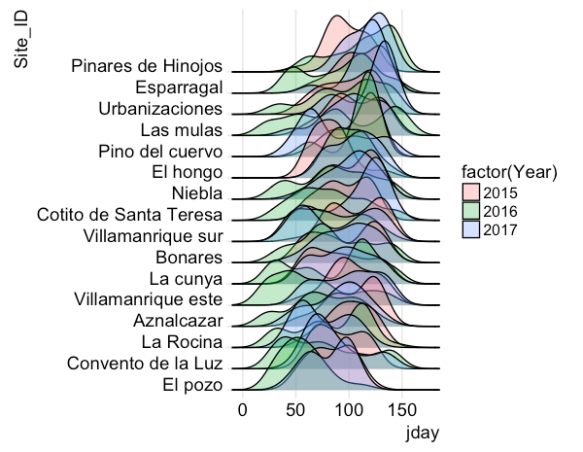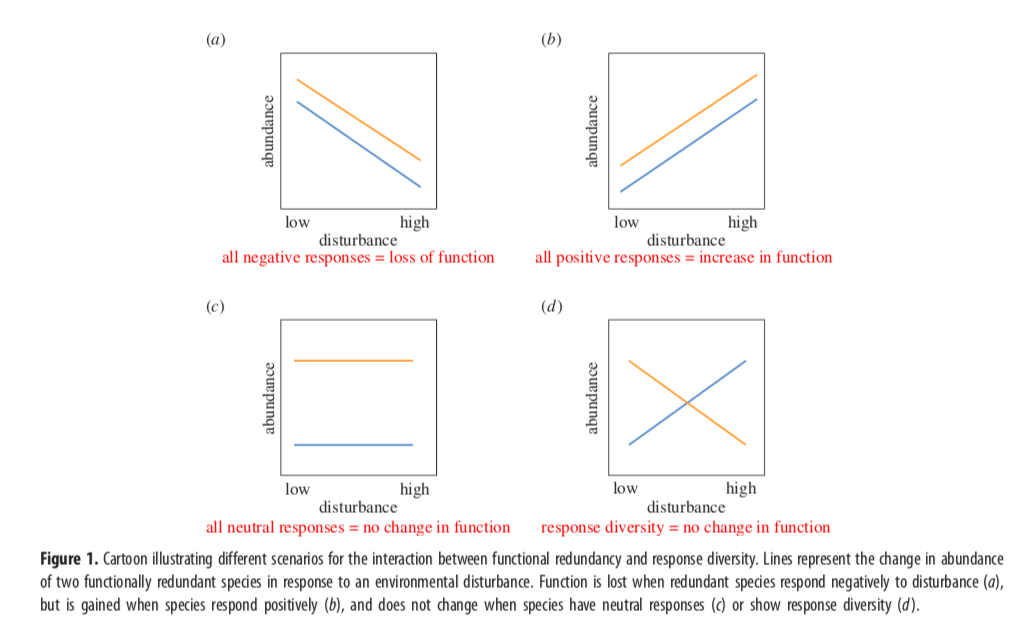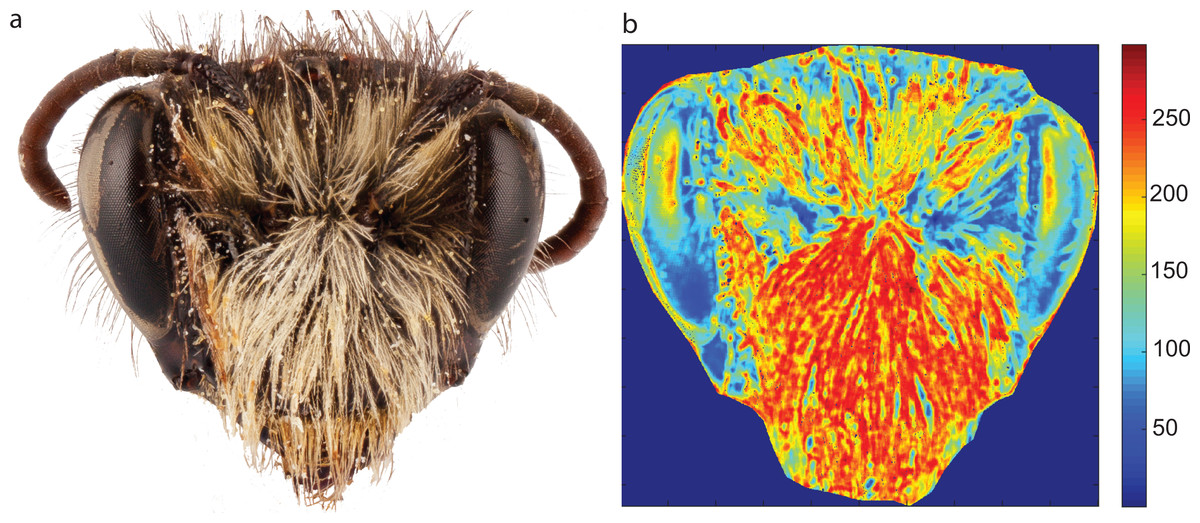BeeFun:
Pollinator responses to global change and its implications for ecosystem function
Marie Curie CIG action PCIG14-GA-2013-631653
Researcher: Ignasi Bartomeus; Host: Montserrat Vilà
The BeeFun project provided funding to start-up the Bartomeus lab and has two differenciated parts. First, BeeFun aims to use existing data to advance our basic understanding on how pollintors respond to global change and its implications for ecosystem functioning. Second, BeeFun allowed us to start an ambitious long-term monitoring program to follow plant-pollinator networks across an environmental gradient and along a temporal sequence.
Below you can find the main results so far:
Empirical results:
Part of the project implies collecting plant-pollinator networks along a land use change gradient.
You can play with the network here:
We are following this networks along the years, and you can see below pollinator phenology in 2016 was earlier (and longer!) in all study sites.

We are still working in publishing these results.
Papers using this data:
1- Magrach, Molina, Bartomeus. Niche complementarity
between pollinators increases community-level plant reproductive
success. bioRxiv, ver.7 peer-reviewed by Peer Community in,
629931.
2- Desjardins, Bartomeus, Poisot, Gravel. A simple
algorithm to effectively predict ecological interactions. In prep.
3- Botias, Gomez-Diaz, Molina, Bartomeus. Understanding
the plant-pollintor-pathogen network. In prep.
4- Rodriguez-Sanchez, Molina, Bartomeus Forecasting the
dynamics of mutualistic networks with environmental change. In prep.
Synthesis results:
The second objective of the project is to use existing data to test the Biodiversity Ecosystem Funcioning theory. In this regards we showed the inconsistency of trait-based ecology to predict ecosystem functions [5]. However, we found that the relationship between response diversity and functional redundancy is a key mediator of cosystem functioning [Figure below; 6] and identified species evenness [10] and invasive species [7], as drivers that we need to take into account when assessing ecosystem functioning.

Papers published:
5- Bartomeus et al. 2017 On the inconsistency of
pollinator species traits for predicting either response to land‐use
change or functional contribution. Oikos
127: 306-315
6- Stavert, Pattemore, Gaskett, Beggs, Bartomeus 2017.
Exotic species enhance response diversity to land-use change but modify
functional composition. Proc.
R. Soc. B 284 (1860), 20170788
7- Stavert, Pattemore, Bartomeus, Gaskett, Beggs.
EExotic flies maintain pollination services as native pollinators
decline with agricultural expansion. Journal
of Applied Ecology 55 (4), 1737-1746
8- Coux, Rader, Bartomeus, Tylianakis. Linking species
functional roles to their network roles. 2016 Ecology
letters 19 (7), 762-770
9- Rader, Bartomeus et al. Non-bee insects are
important contributors to global crop pollination. 2016 Proceedings of the
National Academy of Sciences 113 (1), 146-151
10- Stavert, Bartomeus, Beggs, Gasket, Pattermore.
Plant species dominance increases pollination complementarity and plant
reproductive function. Ecology
100 (9), e02749.
11- Bartomeus and Dicks. The need for coordinated
transdisciplinary research infrastructures for pollinator conservation
and crop pollination resilience. Environmental
Research Letters 14, 045017
12- Kendall, …, Bartomeus. Pollinator size and its
consequences: Predictive allometry for pollinating insects. Ecol Evol. 2019; 9: 1702–
1714
Thesis supported: The thesis of Jamie Stavert was conducted in the framework of BeeFun project.
Unexpected outputs:
All projects deliver unexpected outputs. In this case, we needed to measure bee hairiness as a proxy of its efficiency, which we successfully achieved!

Papers published:
13. Stavert, Liñán-Cembrano, Beggs, Howlett, Pattemore,
Bartomeus 2016 Hairiness: the missing link between
pollinators and pollination PeerJ 4, e2779
14. Hill and Bartomeus. 2016. The potential of
electricity transmission corridors in forested areas as bumblebee
habitat. Royal
Society open science 3 (11), 160525